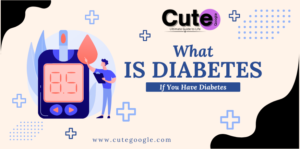The Strength of Vitamin D: Significance, Sources, and the Optimal Methods to Acquire It
As a result of sunlight, vitamin D gets synthesized in our skins. For this reason, it is commonly associated with the word ‘Sunshine Vitamin.’ With modern living, especially with staying indoors or using sunscreen on a hot day, access to sunlight is restricted, which is compounded by long winters. A lot of people today face vitamin D deficiency. This deficiency can badly affect one’s bones, immune response and overall well-being.
This guide provides insights on the advantages related to vitamin D, how to achieve adequate intake, especially with a vegetarian diet, and details about foods fortified with vitamin D, foods rich in vitamin D for vegetarians, and calcium with vitamin D3 supplements that align with your wellness goals.
How This Nutrient Impacts Your Health and Wellbeing
There are several functions that rely heavily on the presence of vitamin D in your body, and one of those functions is calcium absorption. Thus, making it extremely essential for the development and preservation of one’s teeth and bones. Inadequate levels of vitamin D can cause children to suffer from rickets, whereas adults face the risk of osteoporosis, fractures, and muscle weakness.
But there’s more. Vitamin D is also instrumental in:
– Strengthening the immune system
– inflammation reduction
– maintain cardiovascular wellness
– help regulate mood and depression
Recent studies also indicate that adequate vitamin D levels can reduce the risk of chronic conditions such as diabetes and some types of cancer.
What is the recommended amount of vitamin D?
Recommendations vary based on age, gender, and lifestyle, but these are the general ones:
– Infant (0-12 months): 400 IU (10 mcg)/Children and adults (1-70 years): 600 IU (15 mcg)
– Adults above 70: 800 IU (20 mcg)
– Pregnant and lactating women: 600 IU (15 mcg)
As a rule of thumb, children above 6 months and adults require increased dosage.
Vitamin D and sunlight.
The best way of obtaining vitamin D is through sunlight. When the skin is exposed to the UVB rays, the body initiates the synthesis process.
Nonetheless, getting enough sun exposure may be difficult for some individuals, such as those who spend a lot of time indoors, use sunscreen regularly, or live in colder areas. This difficulty increases the need for vitamin D-fortified foods, supplements, and vitamin D-rich foods for vegetarians.
Vitamin D Fortified Foods: Your Next Best Source
The process of adding essential vitamins and minerals to common foods is known as ‘fortification’. Several countries try to mitigate the risk of deficiency by adding vitamin D to select foods within the country.
Some commonly available vitamin D-fortified foods include
– Fortified milk (both dairy and plant-based, like almond or soy milk)
– Fortified orange juice
– Breakfast cereals
– Yogurt
– Cheese
– Margarine
These foods are increasingly important to people who do not get enough sunlight or adhere to vegetarian/vegan diets. Make sure to check the labels regarding fortification and the amount of vitamin D included.
Vitamin D Rich Foods Vegetarian
Following a vegetarian diet or avoiding animal products can make it slightly more difficult to get vitamin D, but not impossible. Most natural sources of vitamin D are from animal sources, but there are still some plant-based alternatives.
Below are some sources of food with high vitamin D content suitable for vegetarians:
• Soy, almond, oator coconut based milks
• Tofu
• Orange Juice with added vitamins
• Mushrooms that grow in sunlight, like maitake and portobello mushrooms that have been treated with UV light
• Breakfast cereals with added vitamins
Out of the different types of food that are considered plants, mushrooms can be categorized as the only ones that contain vitamin D, in addition to others. Fortified foods, however, are much easier to find, and because daily goals and requirements have to be met with all diets, they become necessary.
Calcium and Vitamin D: A Powerful Duo
Calcium and vitamin D are best friends, and so are two nutrients of the body that need to coexist to maintain strong bones and teeth. While vitamin D offers calcium absorption, calcium works on the structure. It’s clear without enough vitamin D in the body, one of the rich sources of food would nearly mean nothing when it comes to bones.
Therefore, health experts recommend and advise taking calcium vitamin D3 or vitamin D3 and calcium in one single tablet as a supplement.
Best Vitamin D Supplement: How to Choose the Right One
The most common types of Vitamin D supplements tend to often differ but at the same time include
• Vitamin D2 (ergocalciferol): Plant-based, but not as good at increasing blood concentration compared to other types.
• IdoVitamin D3 (cholecalciferol): Most effective, often obtained through animal sources, but vegan D3 options are available now.
When searching for a vitamin D supplement, one should look for:
• Form—D2 or D3
• Strength of dosage
• If it contains calcium or other complementary nutrients
• If it is vegetarian- or vegan friendly
Physicians may prescribe high-dose vitamin D supplements to those with severe deficiency. Always consult a physician before starting high-dose supplements.
Benefits of Calcium Vitamin D3 Tablets
Calcium vitamin D3 tablets, or vitamin d3 with calcium tablets, are frequently recommended for individuals prone to osteoporosis and postmenopausal women, as well as people who do not get enough sunlight. Here are the reasons for this:
• Bones: Can help to inhibit bone thinning and minimize fractures.
• Muscle: Vitamin D improves muscle contraction, thus reducing falls among old folks.
• Immunity: Calcium alongside vitamin D aids in bolstering one’s immune system.
Usually, this medication is taken once or twice with meals and is sold without a prescription.
Signs of Vitamin D Deficiency
So many individuals suffer from vitamin D deficiency without knowing because they fail to recognize the subtle signs. Here are some common symptoms that can help with diagnosis:
• Muscle cramps and weakness
• Fatigue
• Depression or anxiety
• Bone ache
• Delayed healing of cuts and wounds
• Increased incidence of infections
Diagnostic tests can confirm your vitamin D status through a simple blood test. A level below 20 ng/mL is considered deficient, while values between 20 and 30 ng/mL are regarded as insufficient, depending on the clinical guidelines used.
Who Is at Risk for Vitamin D Deficiency?
These individuals may be at an increased risk of vitamin D deficiency:
• Practice strict vegetarianism or veganism with no fortified foods
• Aged 65 or older
• Cover most of the skin for cultural or religious reasons
• Spend very little time outside
• Use sunscreen extensively (important for skin health but blocks the production of vitamin D)
• Skin of darker complexion (melanin lowers the production of vitamin D)
• Liver or kidney disease
• Obesity (as vitamin D is sequestered in fat cells)
These groups in particular, would benefit from the consumption of food that is fortified with vitamin D, calcium vitamin D3 tablets, or the best vitamin D supplements.
Vitamin D Increasing: Safe and Natural Methods
Here are some measures to practically enhance your vitamin D levels:
1. Sunbathe for 10-30 Minutes
For optimal results, spend time in the sun midday a few times per week. The duration depends on a person’s skin tone, where they live, and the time of year. Balance sun safety to avoid burns.
2. Consume Fortified Milk, Cereals, and Juices
Make sure to include fortified cereals, milk, and juices in your diet regularly, as they also provide extra doses of vitamin D.
3. Add Plant-based Sources of Vitamin D to Your Diet
Exposed to sunlight, mushrooms and fortified plant products can help vegetarians meet their vitamin D requirements.
4. Choose the Correct Dietary Supplement
For those with limited diet and sun exposure, a tablet containing Vitamin D3 along with Calcium, or the best vitamin D supplement, can be effective. Be sure to select a product based on your dietary restrictions (e.g., vegan, vegetarian).
Possible Concerns Related to Overconsumption of Vitamin D
While imbalances are rare, they are possible. This is typically through excess supplement intake. Possible symptoms include:
• Feeling sick
• Digestive issues
• Fatigue
• Kidney Damage
• High calcium levels in blood
Only use self-prescribed supplements when clearly advised to do so by a healthcare professional. The advisable limit for almost all adults is 4,000 IU a day.
Remove the lines:
`FINAL THOUGHTS: YOUR VITAMIN D GAME PLAN`
Supplements such as vitamin D3 and calcium tablets are relatively simple and convenient ways to boost your health, particularly if you live in an area with prolonged winters or follow a herbivore diet.
Supplements are as essential as fortified foods containing vitamin D, and sunshine plays an important role“. Adjust your dietary approach by incorporating vegetarian foods, vitamin D-rich foods, and Calcium Vitamin D3 tablets into your diet.
When transitioning to a new diet, it is important to listen to what your body tells you, so getting a checkup is not a bad step to ensuring you are taking the right steps with your body. Consult your physician to find the most suitable external vitamin D substitute that aligns with your lifestyle, as your body requires different energies.





